Swartz’s Pigeonplum
Scientific name: Coccoloba swartzii
POWO Status: Tree
IUCN Red List threat level: Least Concern
GPS Location: 17° 42′ 58.76 N, 64° 49′ 46.39 W

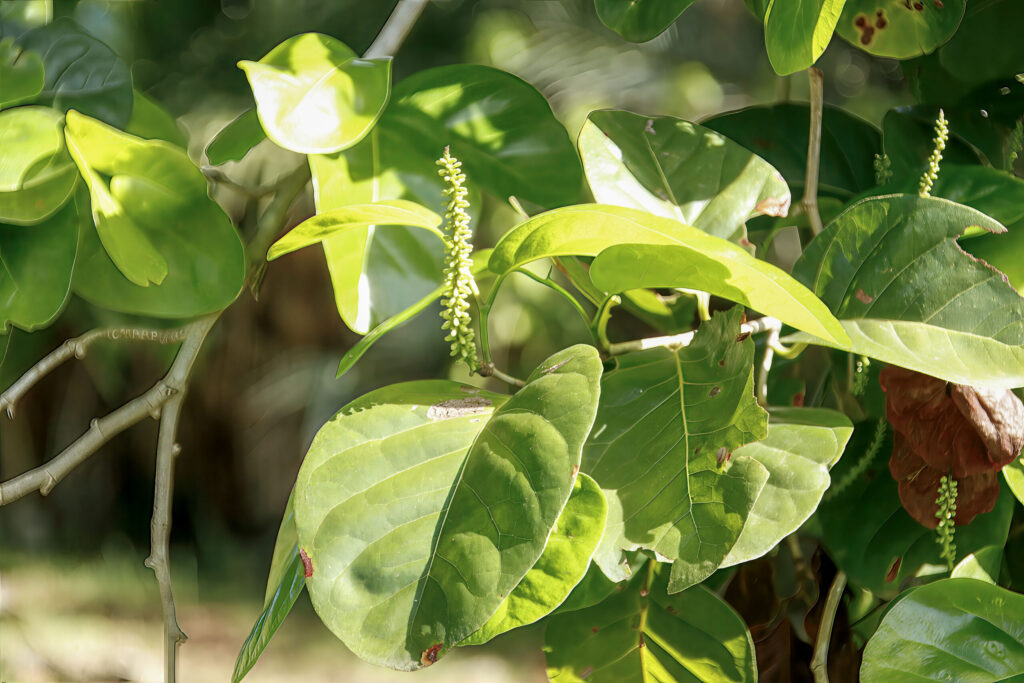
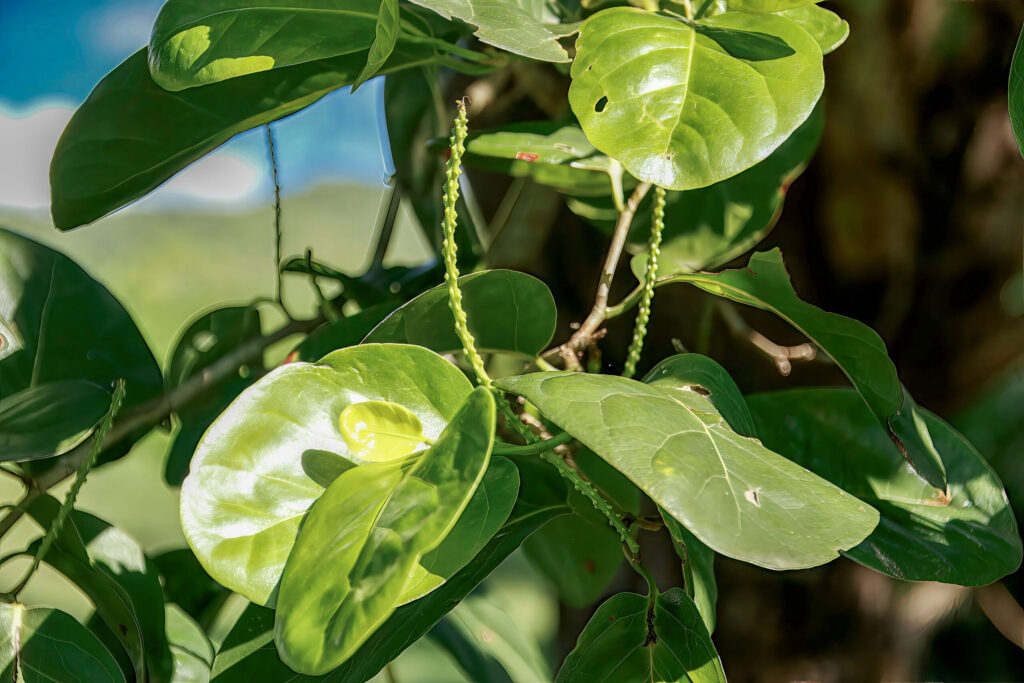
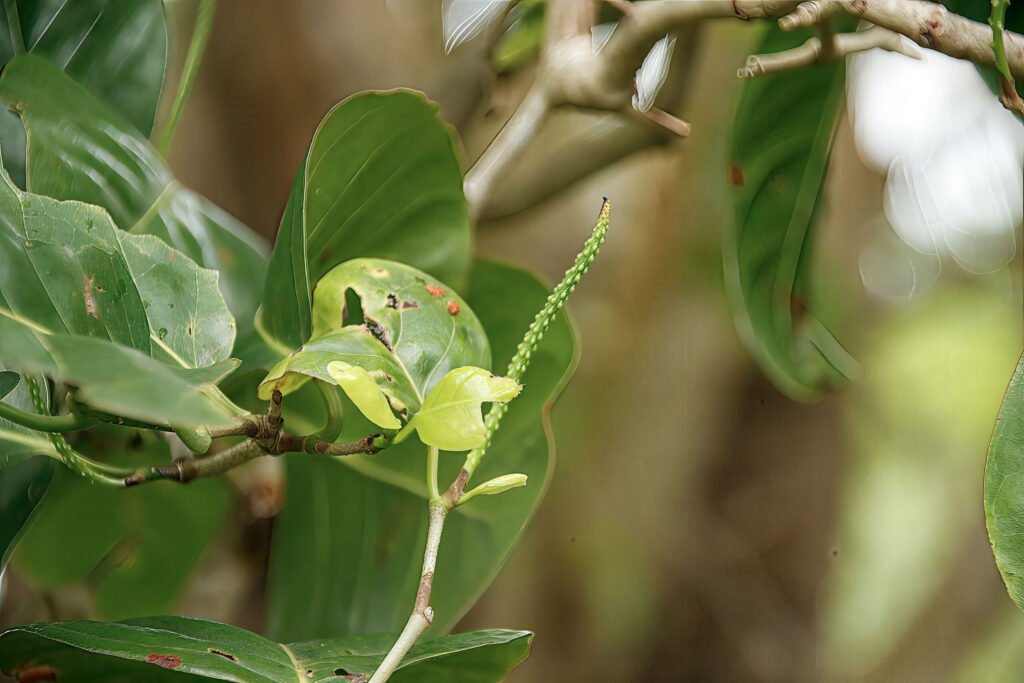
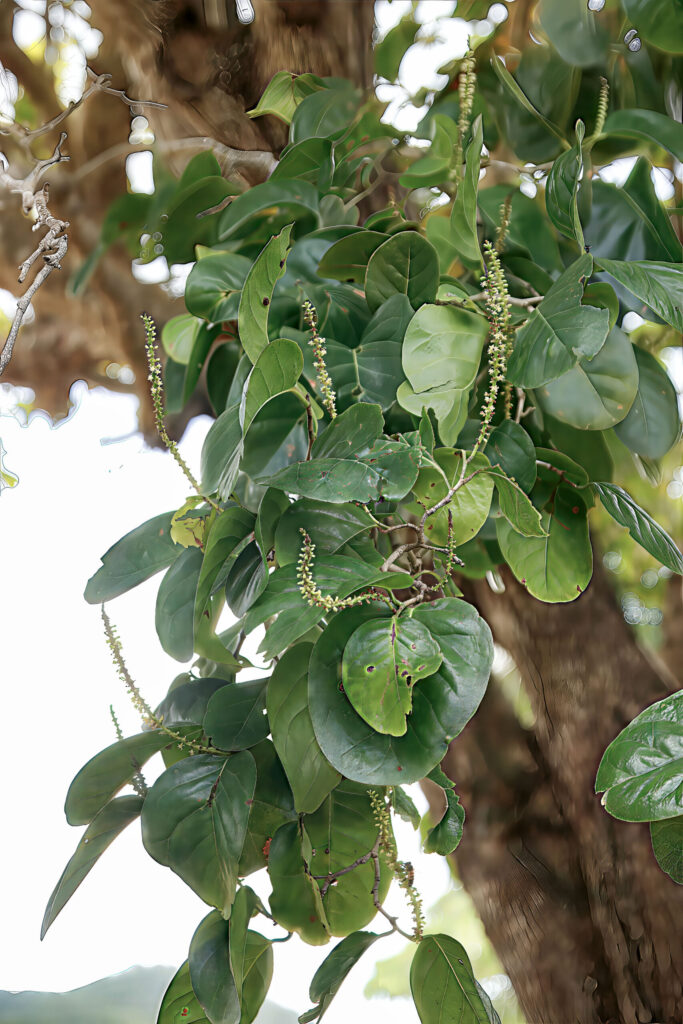
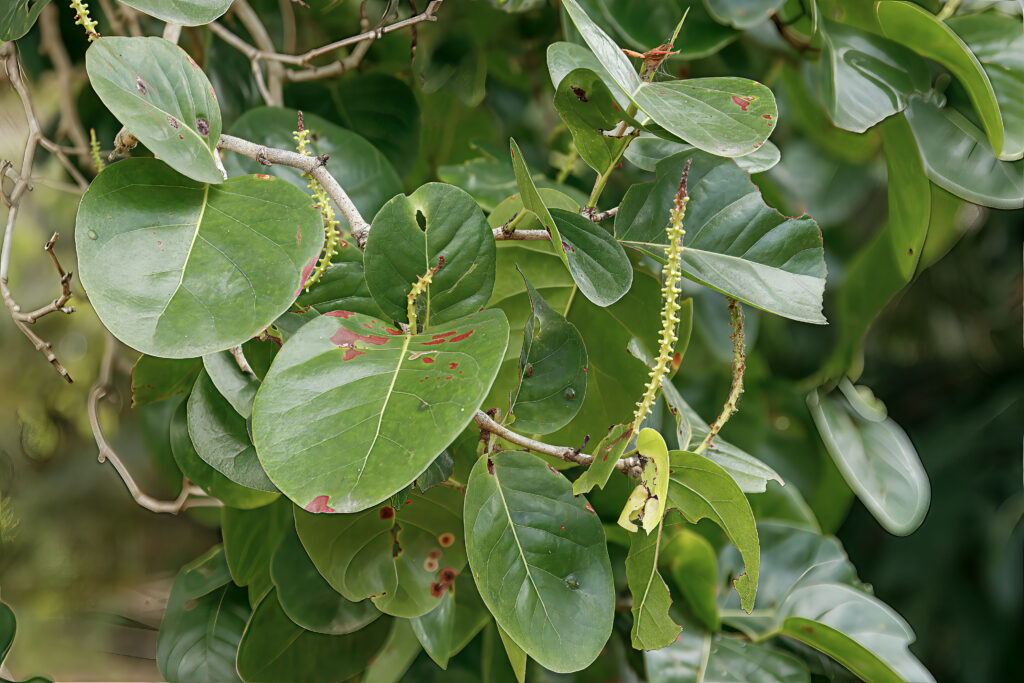






Observations:
Phenological Markers – Schwartz’s Pigeonplum (Coccoloba swartzii)
1. Leaf Behavior
Coccoloba swartzii is a semi-evergreen to evergreen tree, with broad, leathery leaves that may vary slightly in shape but are typically oval to round, with a smooth edge and prominent veins.
- It retains most of its foliage year-round in moist conditions, but may shed some leaves during dry months.
- New leaves emerge in flushes, often reddish to bronze before maturing to green.
Observation Tips:
- Watch for subtle leaf flushing, especially March–May or after rainfall.
- Note any seasonal thinning during extended dry periods (e.g., February–April).
2. Flowering
Flowers are tiny, white-green, and borne in elongated spikes (up to 4 inches long) that emerge at the tips of branches or in leaf axils.
- Blooming typically occurs in spring to early summer, especially April–June.
- The flowers are fragrant and attract bees and other small insects.
Observation Tips:
- Monitor branch tips and leaf axils for developing flower spikes.
- Document pollinator activity, especially on warm mornings.
3. Fruiting
The fruit is a small, round drupe, initially green, turning red to dark purple when ripe.
- Fruits are edible and mildly sweet, though not widely cultivated.
- Fruiting follows flowering, with mature fruit typically present July–September.
- The fruit is important to birds and small mammals for foraging.
Observation Tips:
- Track color progression of fruit clusters.
- Record fruit drop, wildlife feeding, and natural seed dispersal patterns.
4. Growth Habit
A small to medium-sized tree, usually 20–35 feet tall, with a rounded crown and light gray bark.
- Found in dry forests, coastal thickets, and limestone soils.
- Highly tolerant of salt, wind, and poor soil, making it a valuable coastal stabilizer and native landscaping choice.
5. Seasonal Pattern (St. Croix)
- Feb–Apr: Light leaf thinning; early flower spikes may form
- Apr–Jun: Peak flowering and new leaf flush
- Jul–Sep: Fruiting; canopy stability
- Oct–Jan: Gradual return to full leaf cover if previously thinned
